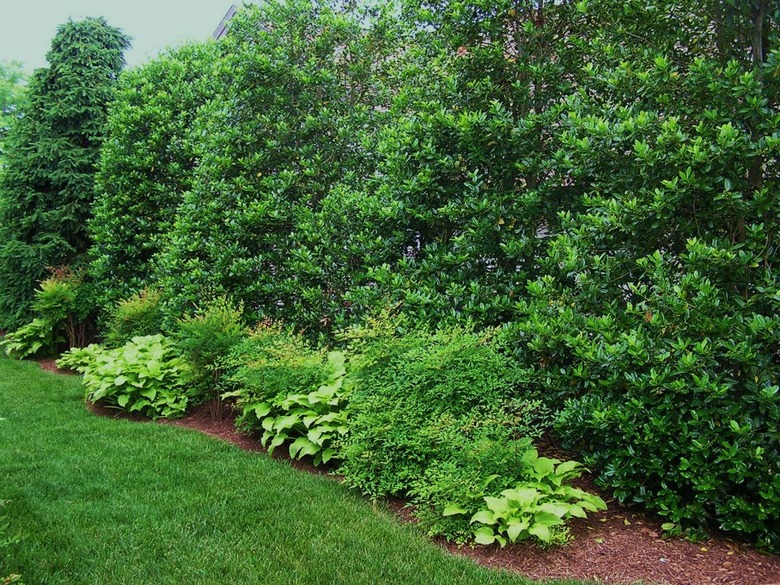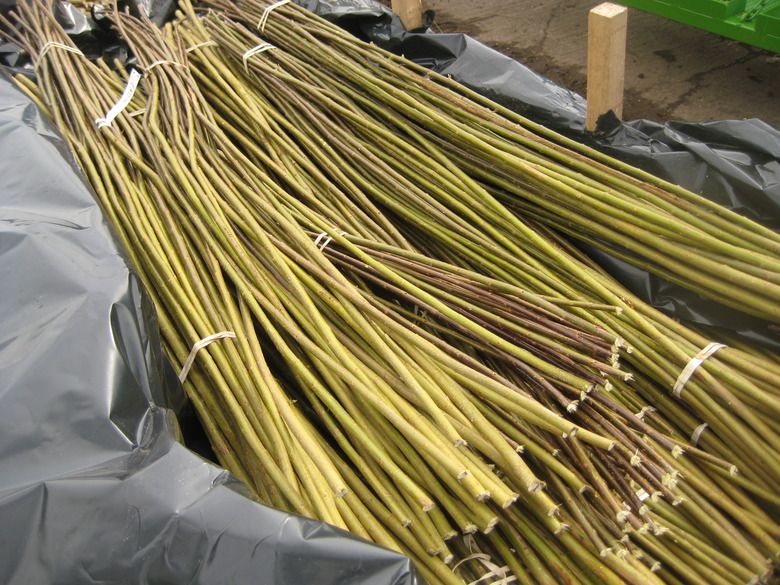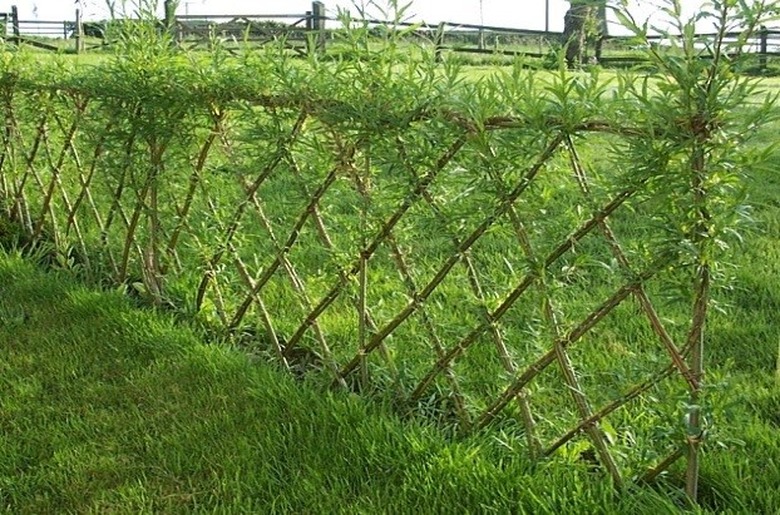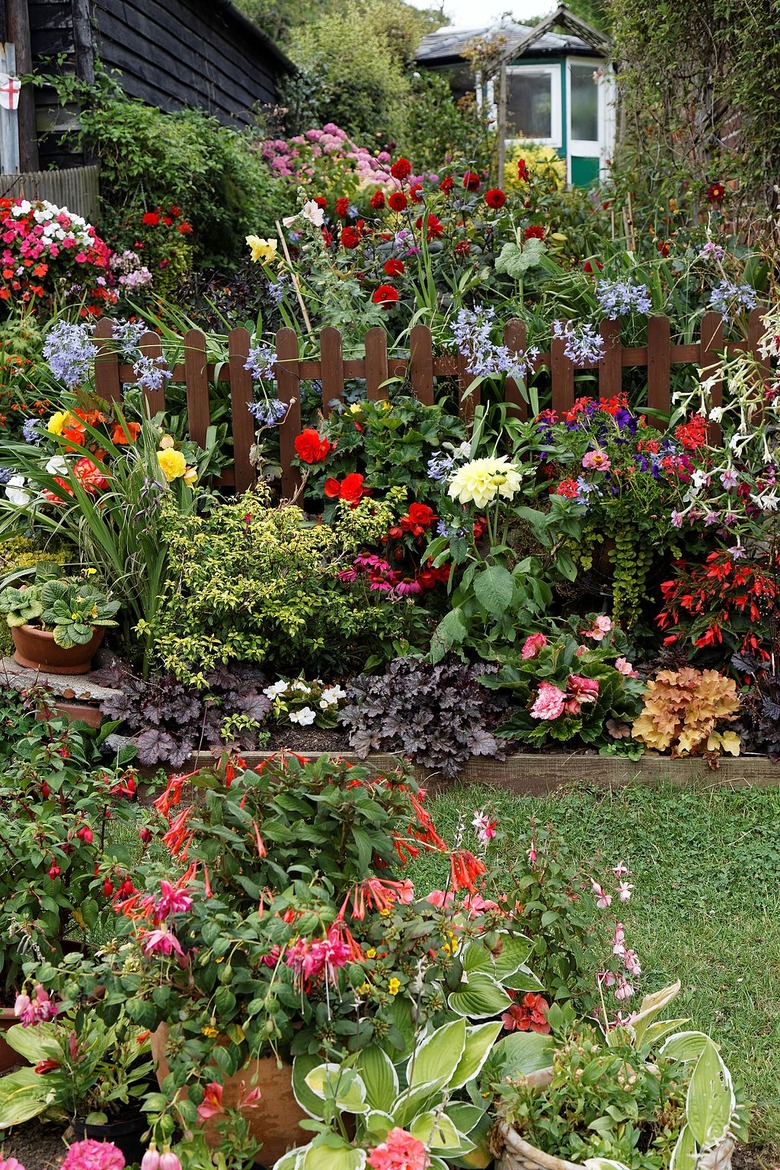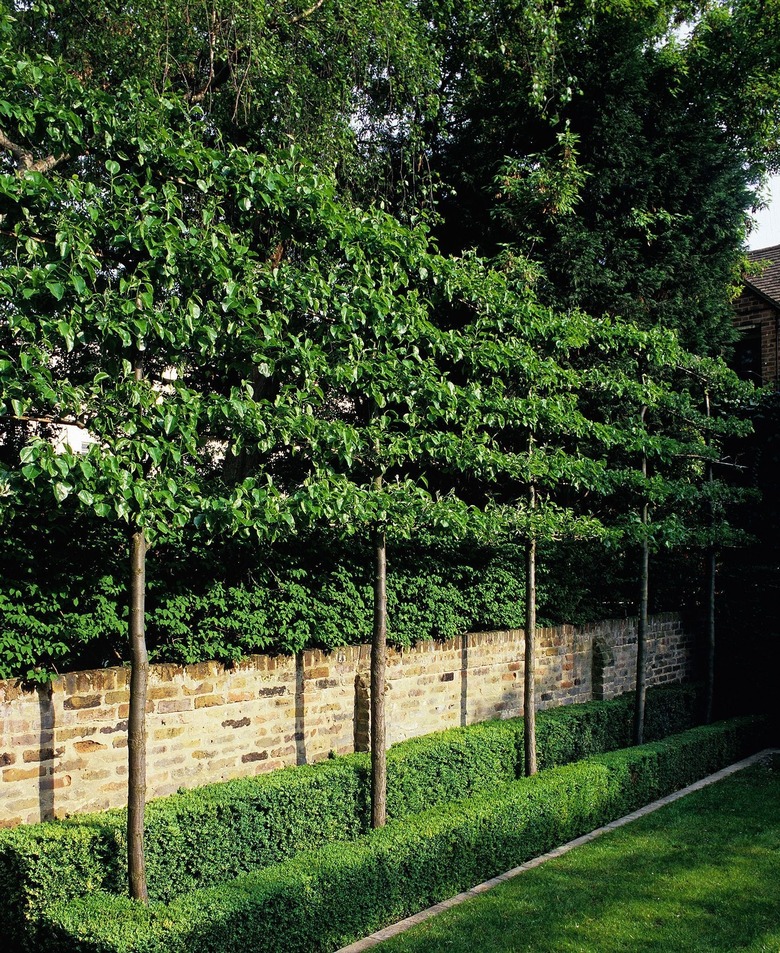How To Build A Living Fence
"Living fence" is a broad category that may be unfamiliar to many of us. But it is a very old concept, and can include anything from simply pruning back existing woody plants in a linear fashion, to planting tight evergreen windbreaks on a pioneer homestead, to growing well-manicured hedgerows that define your borders. But for today's homeowner, it can be difficult to figure out how to apply the living fence concept to your yard.
Without getting too bogged down in definitions, a living fence is simply a vertical edifice of live plants that create a barrier, with or without the assistance of a structural support framework. Although a typical hedgerow of boxwood or barberry would seem to fit into this class, let's set the hedgerow aside and focus on more fence-like alternatives.
Living Willow Fences
Living Willow Fences
The purest form of a living fence is an intentional, planted array that relies on the living plants to provide both the posts and infill (the two primary elements of any fence). It may need some support or trellising as it establishes, but ultimately it is a living, growing, self-supporting entity that defines a border. Willow is the predominant plant for building living fences of this type, although Osage Orange may also be used. The thin willow rods (called whips) are easy to root, grow straight, and can be woven together easily without irritating the plant. Willows do require pruning, particularly at the top.
Do not plant a living willow fence (or any willows for that matter) near your home. Willow has very aggressive roots that are infamous for getting into sewer lines and causing a lot of damage. Because you are actually planting the willow rods, the best time of year to create a fence is in the spring.
Tip
"Willow" is a very large family of plants and the native types vary extensively form region to region. Ask your local nursery to help you select a type that is suitable for fence-building or sculpture. Do not use weeping willow trees, but rather more shrubby types.
How to Make a Living Willow Fence
How to Make a Living Willow Fence
Things Needed
-
Garden trowel
-
Shovel
-
Garden rake
-
Willow rods, approximately 6 to 8 feet. long, 3 or 4 per foot of fence
-
6-foot. stakes, metal or wood, one per 6 feet. of fence.
-
Layout stakes
-
Twine
-
Pruners
1. Lay Out the Fence Line
Stake out your fence line. Fences tend to run straight from point to point, but one advantage to living willow fences is that you can follow a curve with them easily. You can use spray paint to create a fence line, or drive stakes and tie twine or mason's line between the stakes.
2. Prepare the Ground
You don't have to dig deep, but go down at least 12 inches, digging with a shovel or hoe. The goal is to loosen the soil so it is smooth and free of clumps, not to create a trench. Amend the soil as needed— a 20-20-20 NKP fertilizer is often recommended for willow.
3. Drive Support Stakes
While not always necessary, driving a long wood or metal stake every 6 feet. along the fence line and at the ends will help stabilize your living fence, at least until the willows become established, at which point they may be removed if you wish. Drive the stakes about 2 feet. deep, so that 4 feet or so is above ground. Tie a course or two of twine tautly between the stakes.
4. Plant the First Row of Willow Rods
Space the willow rods at 6-inch intervals, or whatever spacing your plan calls for. The typical willow fence design is to plant the rods at a 45-degree angle to the ground so they create a diamond pattern once they are all planted. Dig a small, 6- to 8-inch- deep planting hole for each rod. Plant the rods into the holes at a 45-degree angle (you might want to make a guide for this). TIP: Soak the ends of the rods in a bucket of water for a week or so prior to planting to stimulate their root growth. Lash the rods to the twine and to the stakes to hold them in position.
5. Plant the Crossing Row of Rods
Once you have completed a full run of parallel, angled rods, go back in the other direction and plant rods at the opposite 45-degree angle, so that hey cross the first rods and create the diamond pattern. Weave the crossing rods through the original rods and lash with twine as necessary to maintain the pattern.
6. Trim Things Up
Use a pruner to trim the tops of the rods so they follow an even line. As the willow grows, keep the tops and branches trimmed neatly—willow is very fast-growing.
Other Living Fence Options
Other Living Fence Options
You can achieve many of the benefits of a plants-only living wall (and eliminate some of the negatives) by combining forces with a fence or fence-like structure. Or, you can simply plant a shrubs or trees close together in a line. Among the woody plants that work well for dense planting a line are:
- Privet
- Yew
- Pyracantha
- Holly
- Bamboo
- Juniper
